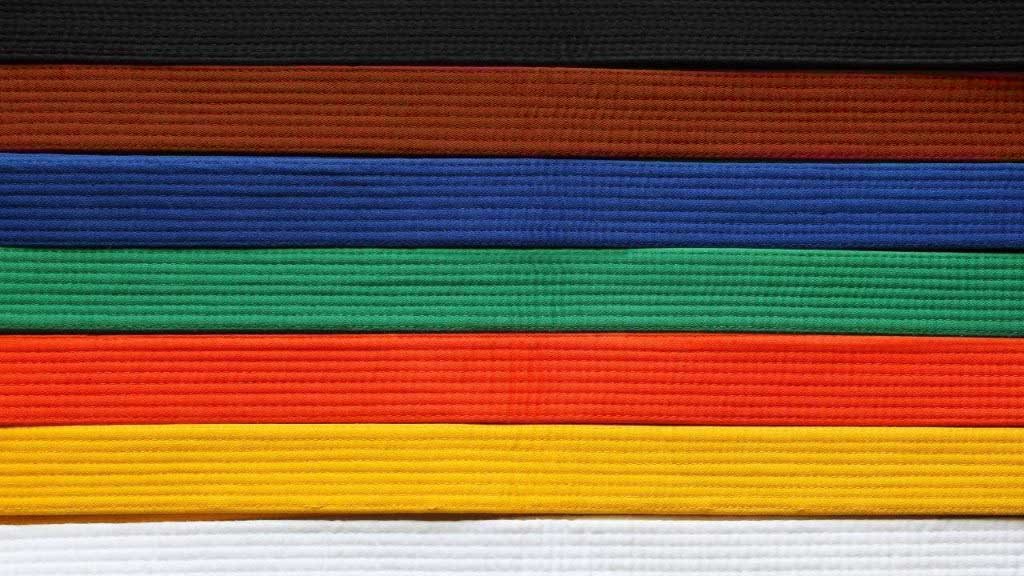
1st Kyu
Brown Belt
Kihon
(Basic Movements)
The following movements are demonstrated from Zenkustu Dachi (Forward Stance), moving forwards with each movement:
See the Kihon movements demonstrated for 2nd Kyu.
Where no height is specified for a movement, the student would be expected to perform these at middle (chudan) and upper (jodan) heights.
In training and grading, these would be called out as follows, for example:
Kata
(Set of Movements)
Heian Shodan
The first kata, with 21 movements, focuses on stance transitions (forwards and backwards), punching and blocking. It is the foundational kata that all students learn first.
Heian Nidan
The second kata, with 26 movements, and introduces more stances (Kokutsu - Back Stance).
Heian Sandan
The third kata, shorter with only 20 movements, with simultaneous strikes and blocks.
Heian Yondan
The fourth kata, with 27 movements taking place in an I-shape, with elbow strike and kosa-dachi (cross-legged stance) being introduced.
Heian Godan
The fifth kata, with 23 movements reinforcing all of the basic stances, and including a jump towards the end of the kata.
Tekki Shodan
The sixth kata, focusing on kiba dachi (straddle stance), with 23 moves.
Jitte
The seventh kata introduces movement that works with the bo (staff) and comprises of 24 moves.
Tekki Nidan
The eighth kata is set in kiba dachi (straddle stance) and works through whole body movements and grappling.
Empi
The ninth kata is one of the longer katas at 37 movements, including a 360 degree jump.
Ippon Kumite
(One Step Sparring)
One step sparring is where a student defends from a single attack. The attacker will take one step towards the defending student, who will be expected to avoid, or block the incoming attack and respond with an appropriate technique.
At 1st Kyu the student will be expected to demonstrate 10 different techniques to defend against:
Any Attack (Punch and Kicks)
Right and Left side
Gedan, Chudan and Jodan heights (Lower, Middle and Upper Heights)
Sanbon Kumite
(Three Step Sparring)
Three step sparring is where a student defends from three attacks moving across the mat.
The attacker will prepare (in forward stance) and then move forwards three times attacking at Jodan (upper height), Chudan (middle height) or Gedan (lower-height). The student needs to defend against all three attacks and then finish by counter-attacking.
Naifu
(Knife Techniques)
Students need to demonstrate five different techniques against knife attacks at 1st Kyu.
See a variety of knife techniques that could be demonstrated for grading.
The student will be defending against an attacker armed with a knife (we use rubber dummy knifes for safety). The attacker will indicate which striking technique they’re going to perform (overhead, forward thrust, swing or rising) and the defender will need to defend against the attack, and ideally disarm the attacker.
Jiyu Kumite
(Free Sparring)
During grading, for 1st Kyu students will take part in Jiyu Kumite, which is a free fighting competition. At Stafford Shotokan Karate we focus on the martial art and traditional technique. Oppononents are decided by the Sensei, and of a similar level.
